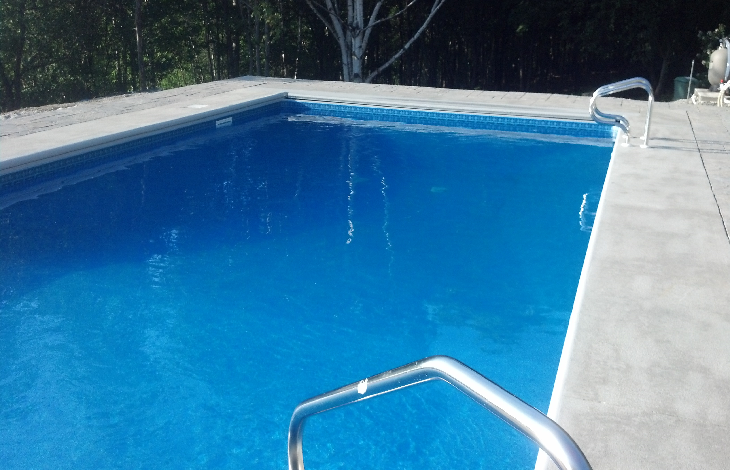Swimming pools, particularly the residential types, have come a long way since Emperor Nero first came up with the idea. Thanks, in large part to improving technology, they have evolved from a singular type, size and style to a wide variety of the same. Today, homeowners enjoy significant freedom of choice concerning the installation of a pool within their homesteads.
Even with the expansion of swimming pool types and styles, inground pools remain the most prevalent type installed today. Therefore, if you have the space and budget to accommodate the construction of an inground swimming pool, you still have to choose between three different types, namely:
- Concrete.
- Vinyl.
- Fibreglass.
As you can see, the primary distinguishing factor is the materials used for construction. However, each one has some notable features that differentiate it from the others. So read on for more information on the different inground swimming pools.
Concrete Pools
These are the most popular type of pools in use today by far, primarily because of concrete’s efficacy and durability. This material can withstand not only different weather and climatic changes but also the shifts between them. Therefore, if you desire longevity above all else, a concrete pool may be ideal.
On the other hand, concrete pools take time and significant amounts of money to install despite, or maybe because of their durability. As a result, selecting this type comes with important budgetary considerations to execute.
Fibreglass Pools
Fibreglass pools fall in the mid-range of inground swimming pool options. Their installation is relatively simple. It begins in the factory, where a manufacturer creates pre-cast units, which are then shipped to the construction site. Once on-site, the mould is lowered into a hole specially prepared for the purpose before all peripheral components are connected. Completing this process requires little more than a few days, a significant difference from the concrete installation, which can go on for weeks to months.
Fibreglass pools are well suited to a variety of soil and environmental conditions, including frozen ground, rocky or moist soil areas. This versatility comes from the material’s ability to flex and allow for some movement. In addition, they are relatively easy to care for and maintain.
Vinyl Pools
With regard to budgetary concerns, vinyl is the cheapest type of inground pool to install. Construction involves using frames made out of wood, plastic or galvanised steel. These frames then act as supports that dictate the pool’s size and design based on your wishes.
Vinyl pool frames are constructed off-site then shipped to their ideal position, where they are quickly installed. Compared to the construction of concrete or fibreglass pools, this process proves to be significantly more straightforward. So if you cannot wait to start using your new pool, this is the right type for you. No matter the type of inground pool you opt to install, you must ensure that the builder undertakes the process carefully. Therefore, you must also select your expert with due care and diligence to guarantee satisfactory results.
Read Also:
How To Build A Swimming Pool
SWIMMING POOLS: THE PROCESS OF CONSTRUCTION
